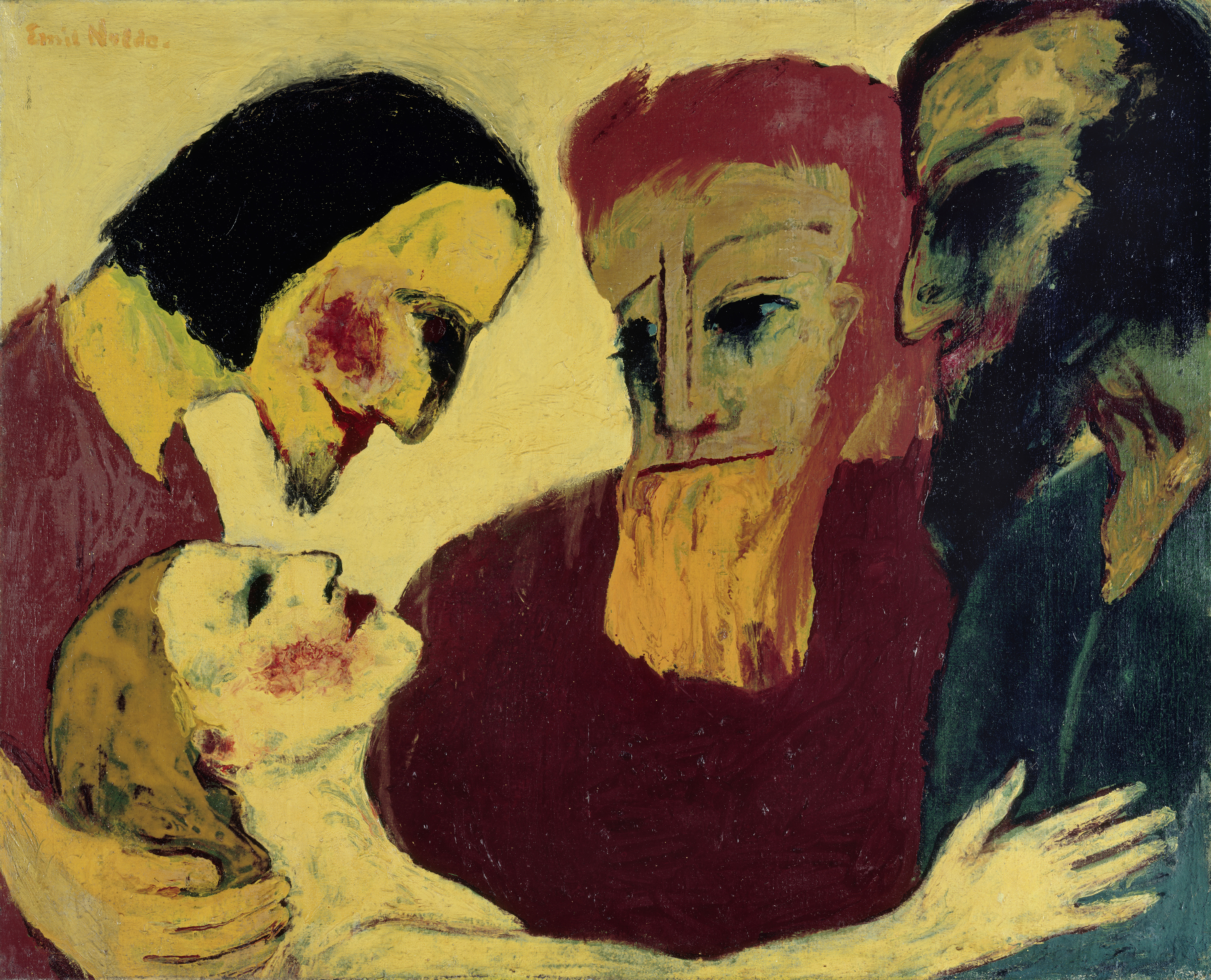Emil Nolde
The Sinner, 1926
Artist
Emil Nolde
Title
The Sinner
Year of creation
1926
Technique and dimensions
oil on canvas, 86 x 106 cm
Year of acquisition
1999
Acquired with the Prussian Cultural Heritage Foundation and the German Class Lottery Foundation, Berlin, for the state of Berlin.
Religious themes occupy a central place in the painter's work - from the early Last Supper, 1909, to the nine-part Life of Christ, 1911-12, to the late painting Jesus and the Scribes, 1951. Martin Urban's oeuvre catalog lists 1 painting of these "biblical and legendary images". Of the 20 paintings from 1926, five alone have a religious theme, including The Sinner. Prepared by an etching from 1911, Nolde probably painted The Sinner in the fall of 1926 in her Berlin studio at Tauentzienstrasse 8 "on thick, self-primed canvas (...) with pure, only slightly mixed colors" (Emil Nolde).
In the Gospel of Luke (7/46-48,50) it says about the encounter between Christ and the sinner: "But she anointed my feet with ointment. That's why I say: Her many sins are forgiven. That's why she showed me much love But he who is forgiven little loves little. And he said to her, Your sins have been forgiven. Go in peace."
In his painting, however, Emil Nolde does not provide an illustration of the biblical legend, but rather a free paraphrase of the New Testament story, to which the painter adds the two Pharisees. A strictly surface-related, closed composition with four eyes in the cut and in the hard contour, three of them in profile. The sinner sinks back and falls into the abyss with her gesture demanding forgiveness. Naked and bare, her eyes dead, blotchy red on her cheeks. Close to the mannequin, the pale yellow-green of the body, withering like the autumn leaves of life. In her helplessness she is everything in one person: the Eve of the Fall, the adulteress and the cheap prostitute Mary Magdalene, the "fallen girl".
Christ appears as a sensitive person among people who can forgive as a helper in times of need. At her side is the man with the red flaming beard, who shows interest in the process, and at the edge is the dark figure of the black-bearded Pharisee, the counterpart of Christ in the shadow kingdom, the dismissive judge who cannot and will not forgive anything. The light of hope and harmony shines from the ground that shimmers like gold and dominates the glistening aura of the picture painted in the melting flow of colors: "Yellow can paint happiness and also pain" (Emil Nolde). Human existence is here put to the test of guilt, atonement and resurrection.
Ludwig Justi acquired The Sinner as an icon of religious expressionism in 1929 for his legendary collection in the National Gallery in the Kronprinzen-Palais. With the exhibition "Degenerate Art" the picture traveled to Salzburg in 1937/38 as a "witch's haunting" and "devil's face". In 1939, Nolde's friend Hans Fehr acquired it at the Fischer Fischer auction in Lucerne, and years later The Sinner found its way into a private collection in the Rhineland.
Roland March
